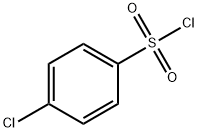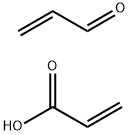Chloramine B
Synonym(s):Benzene chloramine;Chloramine B;Sodium (phenylsulfonyl)chloramide
- CAS NO.:127-52-6
- Empirical Formula: C6H5ClNNaO2S
- Molecular Weight: 213.62
- MDL number: MFCD00007545
- EINECS: 204-847-9
- SAFETY DATA SHEET (SDS)
- Update Date: 2024-12-18 14:08:52

What is Chloramine B?
The Uses of Chloramine B
It's a organochlorine disinfectant, and the effective chloric arrive 26-28%, the property is stable, only loss 0.1% effective chloric after airtight kept 1 year . Slightly soluble in water, and Stimulating & corrosive is small, so the efficacy is slower than hypochlorous acid. Chloramine-B is mainly used for disinfecting container of drinking water, all kind of tableware, fruits and vegetables(5ppm), aquaculture water and enamel instruments(1%). It's also can be used for cleaning breast of cattle, milk cup, livestock urinary tract, festering,etc.
The Uses of Chloramine B
Used in investigations of the toxicity response of electroactive microbial biofilms
Catalyst for rearrangement of aziridinofullerenes to azafulleroids
Oxidizing agent for polymerization of thiophenol, synthesis of o-aminobenzenesulfonic acids and ciproflaxin
Decontaminant for mustard
What are the applications of Application
Chloramine B is used in investigations of the toxicity response of electroactive microbial biofilms
Flammability and Explosibility
Non flammable
Properties of Chloramine B
| Melting point: | 190°C |
| Boiling point: | 189℃[at 101 325 Pa] |
| Density | 1.484[at 20℃] |
| vapor pressure | 0Pa at 20℃ |
| storage temp. | Keep in dark place,Inert atmosphere,2-8°C |
| solubility | H2O: 0.1 g/mL, clear |
| form | solid |
| pka | 1.88[at 20 ℃] |
| Water Solubility | 0.1 g/mL |
| Merck | 14,2074 |
| BRN | 3599287 |
| EPA Substance Registry System | Chloramine B (127-52-6) |
Safety information for Chloramine B
| Signal word | Danger |
| Pictogram(s) |
 Corrosion Corrosives GHS05  Exclamation Mark Irritant GHS07  Health Hazard GHS08 |
| GHS Hazard Statements |
H302:Acute toxicity,oral H314:Skin corrosion/irritation H334:Sensitisation, respiratory |
| Precautionary Statement Codes |
P260:Do not breathe dust/fume/gas/mist/vapours/spray. P280:Wear protective gloves/protective clothing/eye protection/face protection. P301+P312:IF SWALLOWED: call a POISON CENTER or doctor/physician IF you feel unwell. P303+P361+P353:IF ON SKIN (or hair): Remove/Take off Immediately all contaminated clothing. Rinse SKIN with water/shower. P305+P351+P338:IF IN EYES: Rinse cautiously with water for several minutes. Remove contact lenses, if present and easy to do. Continuerinsing. |
Computed Descriptors for Chloramine B
| InChIKey | KDNCILYKSYKEFJ-UHFFFAOYSA-N |
New Products
(S)-3-Aminobutanenitrile hydrochloride 4-Methylphenylacetic acid N-Boc-D-alaninol N-BOC-D/L-ALANINOL Tert-butyl bis(2-chloroethyl)carbamate 3-Morpholino-1-(4-nitrophenyl)-5,6-dihydropyridin- 2(1H)-one Furan-2,5-Dicarboxylic Acid Tropic acid 1-Bromo-3,5-Di-Tert-Butylbenzene S-2-CHLORO PROPIONIC ACID ETHYL ISOCYANOACETATE 2-Bromo-1,3-Bis(Dimethylamino)Trimethinium Hexafluorophosphate 4-IODO BENZOIC ACID 3-NITRO-2-METHYL ANILINE 1-(2,4-DICHLOROPHENYL) ETHANAMINE (2-Hydroxyphenyl)acetonitrile 4-Bromopyrazole 2-(Cyanocyclohexyl)acetic acid 4-methoxy-3,5-dinitropyridine 1-(4-(aminomethyl)benzyl)urea hydrochloride 2-aminopropyl benzoate hydrochloride diethyl 2-(2-((tertbutoxycarbonyl)amino) ethyl)malonate tert-butyl 4- (ureidomethyl)benzylcarbamate Ethyl-2-chloro((4-methoxyphenyl)hydrazono)acetateRelated products of tetrahydrofuran








You may like
-
 N-Chlorobenzenesulfonamide sodium salt CAS 127-52-6View Details
N-Chlorobenzenesulfonamide sodium salt CAS 127-52-6View Details
127-52-6 -
 2033-24-1 98%View Details
2033-24-1 98%View Details
2033-24-1 -
 1975-50-4 98%View Details
1975-50-4 98%View Details
1975-50-4 -
 2-HYDROXY BENZYL ALCOHOL 98%View Details
2-HYDROXY BENZYL ALCOHOL 98%View Details
90-01-7 -
 2-Chloro-1,3-Bis(Dimethylamino)Trimethinium Hexafluorophosphate 221615-75-4 98%View Details
2-Chloro-1,3-Bis(Dimethylamino)Trimethinium Hexafluorophosphate 221615-75-4 98%View Details
221615-75-4 -
 61397-56-6 CIS BROMO BENZOATE 98%View Details
61397-56-6 CIS BROMO BENZOATE 98%View Details
61397-56-6 -
 14714-50-2 (2-Hydroxyphenyl)acetonitrile 98+View Details
14714-50-2 (2-Hydroxyphenyl)acetonitrile 98+View Details
14714-50-2 -
 118753-70-1 98+View Details
118753-70-1 98+View Details
118753-70-1